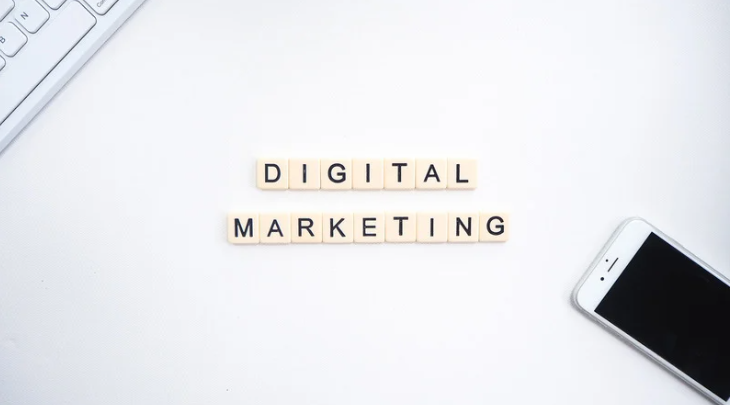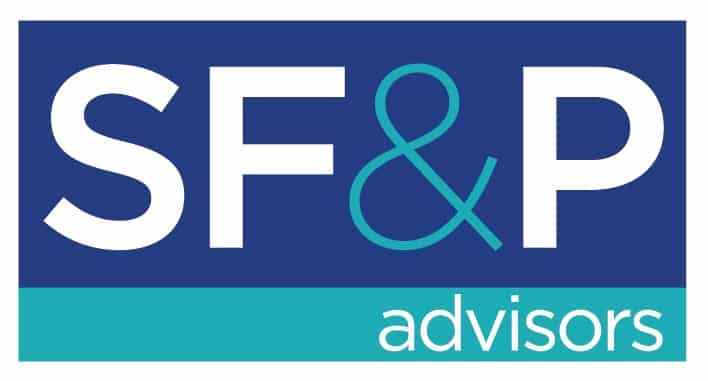Are you looking for a marketing tool that has stood the test of time and continues to deliver powerful results?
Look no further than magazine advertising! In today’s fast-paced digital age, it’s easy to overlook the impact of print media. However, magazine advertising remains a potent force in the world of effective marketing.
With its captivating visuals, targeted readership, and ability to build brand awareness, magazine advertising has proven its worth in the ever-evolving marketing landscape.
Join us as we delve into the realm of magazine advertising and explore how this timeless medium can help your business achieve remarkable success.
Short Summary
-
Magazine advertising is a powerful marketing tool that harnesses the enduring influence of print media.
-
It offers advantages such as less competition, targeted reach, and credibility in reaching the desired audience.
-
Magazine advertisements can build brand awareness by showcasing identity, leveraging visual impact, and storytelling potential.
-
Engaging readers through creative design, captivating visuals, and compelling content creates a deeper connection.
-
Integrating magazine advertising with digital strategies enhances the reach, tracking, and overall effectiveness of marketing campaigns.
What is Magazine Advertising?
Magazine advertising is a marketing strategy that utilizes print publications to promote products, services, or brands.
In a world dominated by digital platforms, magazine advertising stands as a testament to the enduring influence of print media.
Despite the rise of online advertising, magazines continue to offer unique advantages and opportunities for businesses to connect with their target audience in a meaningful way.
The Power of Print
Print media holds a special place in the hearts and minds of consumers. Magazines, in particular, offer a tangible experience that engages multiple senses and provides a focused reading experience.
The tactile nature of print and the immersive quality of flipping through glossy pages creates a unique and memorable encounter with advertisements.
While digital platforms provide instant access and convenience, magazines have a longer lifespan. They are often kept for weeks or months, offering repeated exposure to advertisements.
Additionally, magazines have a loyal and engaged readership who actively seek out content that interests them, making it easier for businesses to target specific demographics and niche markets effectively.
Advantages of Magazine Advertising Over Digital Platforms
-
Less Competition: With the decline of print advertising, there is a reduced competition for ad space in magazines compared to the overcrowded digital landscape. This allows ads to stand out and grab readers’ attention more effectively.
-
Targeted Reach: Magazines cater to specific interests, hobbies, or industries, allowing businesses to precisely target their desired audience. Advertisements can be placed in magazines that align with the target market, ensuring maximum exposure to potential customers.
-
Credibility and Trust: Magazines are often seen as authoritative sources, which enhances the credibility and trustworthiness of advertisements featured within their pages. This association can positively impact consumers’ perception of the brand and influence their purchasing decisions.
Magazine Advertising Strategies: Reaching, Engaging, and Measuring Success

To make the most of magazine advertising, businesses need effective strategies that can reach the right audience, build brand awareness, engage readers, enhance credibility, and measure success.
In this section, we will explore key strategies for leveraging magazine advertising to achieve marketing goals and maximize return on investment.
Targeting the Right Audience
Researching and analyzing the audience demographics and interests of different magazines can help businesses identify the publications that align with their target market.
Customizing advertisements to match the preferences and characteristics of the target audience ensures maximum relevance and resonance, increasing the likelihood of generating positive response and conversions.
Building Brand Awareness
Magazine ads provide a platform to showcase brand identity, values, and unique selling points, increasing brand recognition among readers.
Utilizing eye-catching visuals, compelling imagery, and engaging storytelling techniques in magazine ads can captivate readers’ attention, leaving a lasting impression and strengthening brand awareness.
Engaging and Captivating Readers
Innovative design elements, bold typography, and visually striking layouts can capture readers’ attention amidst the visual noise, making the ad memorable and enticing.
Crafting compelling narratives, persuasive copy, and informative content within a magazine ad can resonate with readers, evoke emotions, and create a meaningful connection with the brand.
Enhancing Credibility and Trust
Magazine advertising benefits from the established reputation and expertise of the publication, which lends credibility and trust to the advertised brand.
Magazine ads can tap into readers’ trust in the publication, influencing their purchasing decisions and fostering long-term brand loyalty.
Measuring Success and Return on Investment
Implementing tracking mechanisms, such as unique URLs, QR codes, or promotional codes, can help measure the impact and effectiveness of magazine ads in driving customer engagement and conversions.
Conducting thorough analysis and comparison of the return on investment from magazine advertising against other marketing channels can provide insights into the cost-effectiveness and overall performance of a magazine ad campaign.
Exploring Various Types of Magazine Advertisements

Magazine advertisements come in different formats and styles, each offering unique advantages and opportunities for businesses to convey their messages effectively.
Classifieds
Classified advertisements are brief, text-based ads that are typically grouped together in a specific section of a magazine. They are commonly used for job postings, real estate listings, personal announcements, and small-scale promotions. Classified ads are concise and focused, providing essential information to the magazine readers in a straightforward manner.
Display Ads
Display advertisements are visually impactful and eye-catching ads that occupy a significant portion of a magazine’s page. They can feature a combination of images, graphics, and text to convey the brand’s message. Display ads come in various sizes, including full-page, half-page, or quarter-page, and their positioning within the magazine can vary based on the advertiser’s preference and budget.
Advertorials
Advertorials, also known as native advertisements, blend seamlessly with the editorial content of the magazine. They are designed to mimic the style and format of the publication’s articles, providing informative or entertaining content that subtly promotes a product, service, or brand. Advertorials often aim to engage readers by providing valuable information while subtly building brand awareness and credibility.
Inserts and Gatefolds
Inserts are separate printed materials, such as leaflets, brochures, or catalogs, that are inserted into the magazine. They allow businesses to provide more detailed information about their products or services. Gatefolds are larger inserts that fold out from the magazine, providing a visually captivating and interactive experience for readers.
Sponsorships and Special Sections
Some magazines offer sponsorship opportunities or special sections dedicated to specific themes or topics. Businesses can sponsor these sections to gain visibility and association with the chosen content. For example, a fashion brand might sponsor a fashion-focused section, allowing them to align their brand with the magazine’s expertise in that area.
How Much Does It Cost to Put an Ad in a Magazine?
The cost of placing an ad in a magazine can vary significantly based on several factors such as the magazine’s circulation, readership demographics, ad size, ad placement, and the overall popularity of the publication.
On average, a full-page, color ad in national magazines can range anywhere from $5,000 to $100,000 or more per issue. Regional or niche magazines may have lower rates, typically starting from a few hundred dollars for a full-page ad. Smaller ad sizes or black and white ads can also reduce the cost.
It’s important to note that these figures are approximate and can vary widely depending on the specific magazine and its advertising rates, so it’s recommended to directly contact the magazine’s advertising department for accurate pricing information.
Integrating Magazine Advertising with Digital Strategies

Integrating magazine advertising with digital marketing strategies is a powerful approach that leverages the strengths of both mediums to create a cohesive and impactful marketing campaign.
By combining the visual appeal and storytelling potential of print ads with the reach and interactivity of digital platforms, businesses can amplify their message and engage with their target audience on multiple fronts.
This integration can involve using magazine ads to drive traffic to specific landing pages or websites, incorporating QR codes or unique URLs in a print ad for tracking and measurement purposes, leveraging social media channels to extend the reach of magazine campaigns, and utilizing digital retargeting to reinforce brand messaging after initial exposure through magazine ads.
This seamless integration allows businesses to maximize their marketing efforts, expand their audience reach, and create a cohesive brand experience across both print and digital channels.
Conclusion
In a world of evolving marketing strategies, magazine advertising stands tall as a potent tool for effective marketing. From its enduring influence as a power of print to its ability to captivate readers and build brand awareness, magazine advertising offers a unique and impactful way to connect with target audiences.
By targeting the right audience, engaging readers with captivating visuals and compelling content, enhancing credibility, and measuring success, businesses can harness the full potential of magazine advertising.
And when integrated with digital strategies, the combination becomes an unstoppable force, creating a cohesive brand experience across multiple platforms.
Frequently Asked Questions
How do I choose the right magazine for my advertising campaign?
To choose the right magazine, consider your target audience and their interests. Look for magazines that align with your industry or cater to your desired demographic. Research circulation numbers, readership demographics, and advertising rates to make an informed decision.
How long should my magazine advertisement run?
The duration of your magazine advertisement depends on your marketing goals, budget, and campaign objectives. Consider factors such as seasonality, product launches, and promotional offers. It’s recommended to run ads for multiple issues to maximize reach and impact.
Can I track the effectiveness of my magazine advertising campaign?
Yes, tracking the effectiveness of magazine advertising is possible. Implement tracking mechanisms like unique URLs, promotional codes, or dedicated phone numbers to monitor response rates and conversions. Additionally, surveying customers about their awareness of the ad or analyzing sales data during the campaign can provide insights.
Is magazine advertising still relevant in the digital age?
Yes, magazine advertising remains relevant and impactful. While digital marketing platforms have gained prominence, magazines offer unique advantages such as tangible and focused reading experiences, targeted audiences, and the credibility associated with print media. Integrating magazine advertising with digital advertising strategies can further enhance its effectiveness.
What is the cost-effectiveness of magazine advertising compared to other channels?
The cost-effectiveness of magazine advertising varies depending on factors like the publication, ad size, and circulation. While it may have higher upfront costs compared to some digital channels, magazines provide a targeted and engaged readership. Comparing return on investment (ROI) with other marketing channels is recommended to assess cost-effectiveness for your specific campaign.
















